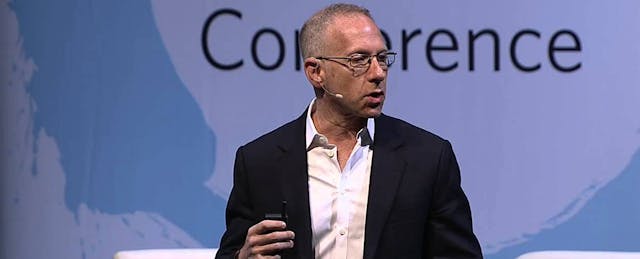Editor's Note: This post was updated on October 3 at 7:00 pm PST.
Steven Hodas, Executive Director of New York City Department of Education’s Office of Innovation and one of the iZone's leaders--has officially left his post. Around the middle of September, Hodas updated his LinkedIn profile to reflect his departure. The biggest reason? The shifting realities of a new government administration.
Hodas, who took his position at the iZone in September 2012, is most proud about having launched a successful collection of initiatives to forge stronger relationships between districts and edtech vendors. Programs like the Gap App Challenge encouraged vendors to solicit feedback from educators and design better software for large school districts--something that he believes is having impact elsewhere in the U.S.
“Being the first district to design open software challenges--that's being kicked up in so many different places across the country,” Hodas explains. “I see lots of people taking it to the next level. I think vendors have been really grateful to work more collaboratively with teachers in schools. It's had serious impact on what's being developed.”
But good work doesn’t always continue through the rapid, and sometimes unexpected, changes in NYC politics. And in Hodas' case, the mayoral election of Bill de Blasio in late 2013 put a brake on the expansion of his plans.
While Hodas insists he left on his own volition, he says that one factor in this decision was his belief that “Phase 2” of iZone’s plans to spread innovative school models and edtech across all of New York City’s 1700 public schools would not happen. (Only 250 NYC schools currently belong in the iZone.) “I didn't have a lot of confidence that we were going to have the political support to get those changes for Phase 2.”
“The work [Phase 1] for the first couple of years was creating this example of the iZone,” he says. “But those things didn't fundamentally change IT policy, or contracting, or procurement yet--essentially part of the second phase of work.”
However, Hodas is confident that he’s helped to build a strong foundation for his former iZone colleagues, “an incredible group of people” who will carry out the recently launched efficacy trials. “The question is where the administration decides to go with this work, and to what degree they understand that it lines up really well with the de Blasio administration’s goal to support teachers,” Hodas shares.
And while Hodas “didn't believe that [he] was going to have the support needed to get the next phase done,” he’s keen on taking his talents elsewhere to build better ecosystems between vendors and schools. “New York... was a nice place to do work. But the ecosystem is much bigger than that. We have a lot of assets here, but we draw on and are part of a much wider world.”
Hodas now works with UK-based edtech think tank The Education Foundation, a group looking to build a better UK-U.S. pipeline for best practices, and the Center for Reinventing Public Education (CRPE), a policy research group out of the University of Washington, where he’ll explore similar issues he faced with the iZone--procurement and contracting, to name a few.
Hodas credits the iZone with teaching him a great deal about creating change in a large district. But at the end of the day, he believes that any district-wide innovation and transformation must scale beyond small pilots and experiments.
“Just doing things at the margins, as the exception, is okay at the start. But you need to move quickly into the mainstream of district practice,” suggests Hodas. Instead of trying out new practices within a zone,“what you really want is these practices just to be part of the everyday craft.”
Update: October 3, 7:00 pm PST
In light of this changing leadership, the New York Department of Education released the following statement on October 3, 2014 regarding its current initiatives and future plans:
“The DOE is committed to developing new and innovative education models to help our students thrive. We’ve made extraordinary strides by bringing innovation into our classrooms and hundreds of NYC schools are innovating in amazing ways every day. We always look for new ways to develop ideas to raise student achievement, and iZone is a central part of this effort.”
Going forward, the Department reports that it is excited to continue, develop and expand its current iZone work. High-level initiatives continuing in 2014-2015 include the Short-Cycle Evaluation Challenge, the Personalized Pathways Challenge to test individualizing for student needs, and projects launched prior to this administration, such as the blended learning and online program iLearnNYC and the Blended Learning Institute (BLI), a two-year teacher training program on 21st century instructional practices.
The DOE also referenced a new initiative launched just this week entitled "digital.nyc," an inclusive online hub for the city’s tech ecosystem. To learn more, the DOE recommends visiting this website for more information.


